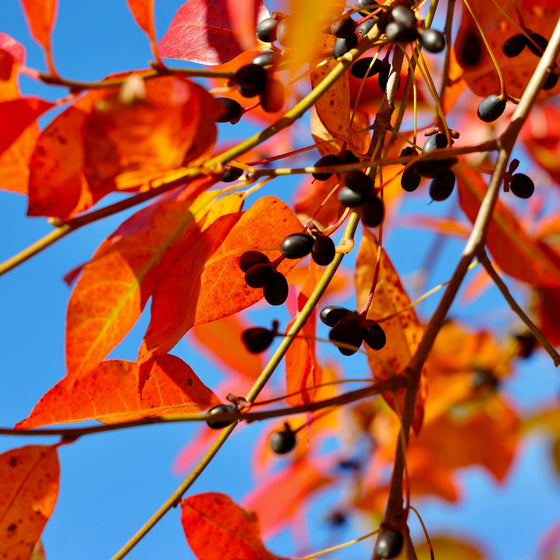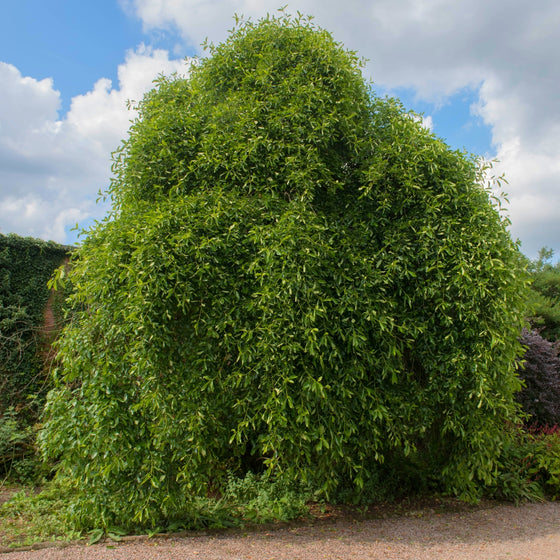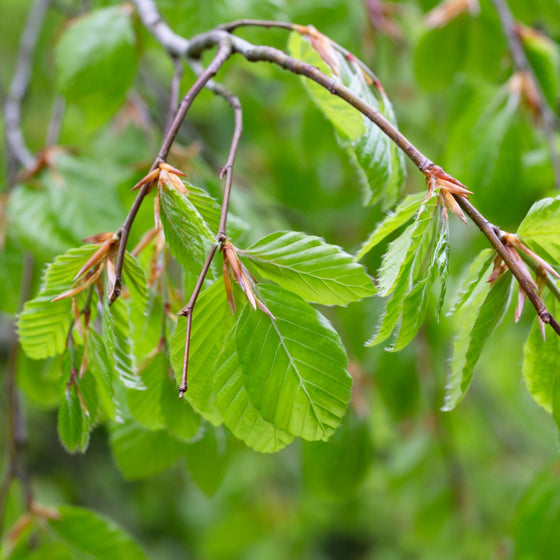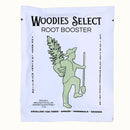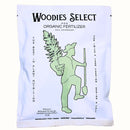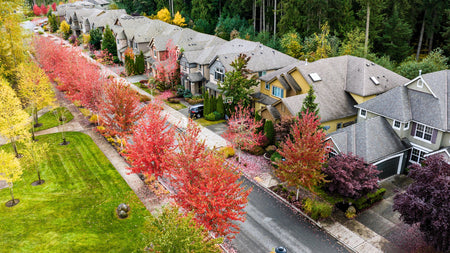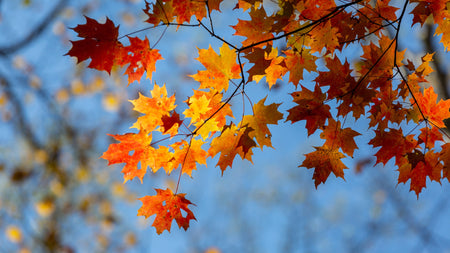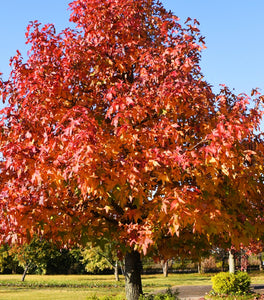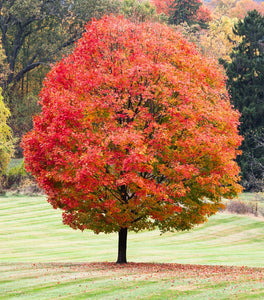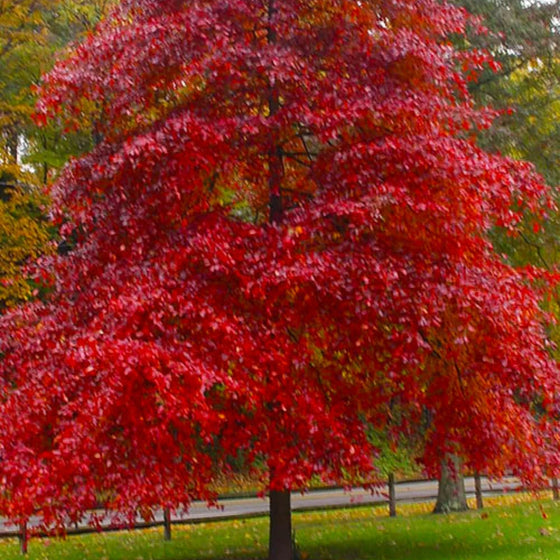
Images Depict Mature Plants
Black Gum Tree for Sale Online
The Black Gum Tree (Nyssa sylvatica), also known as Tupelo or Black Tupelo, is a stunning native shade tree valued for its brilliant fall color, strong branching structure, and exceptional adaptability. Throughout the growing season, this deciduous tree displays glossy, dark green leaves that turn vibrant shades of scarlet, orange, and yellow in autumn, making it one of the most spectacular fall foliage trees in North America. In spring, inconspicuous greenish-white flowers attract a variety of pollinators, including bees, while small, dark-blue fruits in late summer provide a valuable food source for birds and wildlife.
Reaching 30 to 50 feet tall and 20 to 30 feet wide, the Black Gum Tree grows in a pyramidal shape when young and matures into a rounded canopy. It thrives in full sun to partial shade and tolerates a wide range of soil conditions, including moist, acidic, and even poorly drained soils, making it ideal for both urban and rural settings. This tree is also resistant to most pests and diseases, making it a low-maintenance yet highly rewarding landscape addition. Its deep taproot system makes it drought tolerant once established, while its adaptability to wet sites also makes it suitable for rain gardens and naturalized areas.
Hardy in USDA Zones 4–9, the Black Gum Tree is an excellent choice for those seeking a long-lived, native shade tree with four-season interest. In addition to its foliage and ecological benefits, its strong wood and attractive bark texture provide winter appeal. Whether planted as a specimen tree, in a pollinator-friendly garden, or along a woodland edge, the Black Gum offers lasting beauty, wildlife support, and reliable performance in a wide range of landscape settings.
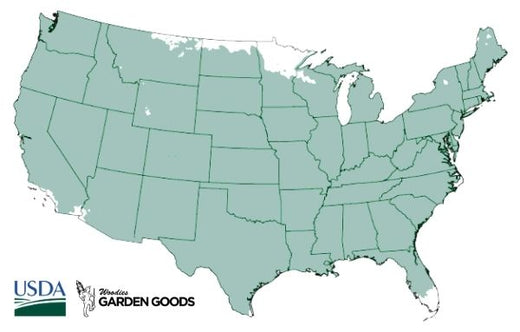
| Hardiness Zone: | 4-9 |
|---|---|
| Mature Height: | 30 to 50 Feet |
| Mature Width: | 20 to 30 Feet |
| Classification: | Shade Tree |
| Sunlight: | Full Sun |
| Habit: | Upright, densely branched |
| Foliage: | Green, Red in the Fall |
| Soil Condition: | Any well drained soil, will tolerate clay soils |
| Water Requirements: | Water well until established |
How to Care for Black Gum Tree
Be sure to read our planting instructions to ensure a healthy and happy Black Gum Tree for years to come!
How do I Plant A Black Gum Tree?
Planting a Black Gum Tree (Nyssa sylvatica), also known as Black Tupelo, begins with choosing a location that receives full sun to partial shade and offers well-drained, acidic to neutral soil. Although highly adaptable, Black Gum thrives in moist, rich soils and is especially well-suited for naturalized areas, rain gardens, and low spots in the landscape. Dig a hole twice as wide and just as deep as the tree’s root ball. Carefully remove the tree from its container, gently loosen the roots, and place it in the hole so that the top of the root ball is level with the surrounding ground. Backfill with the native soil, water deeply to eliminate air pockets, and apply mulch to help retain moisture and suppress weeds. When selecting a planting site, be mindful of the tree’s mature size—30 to 50 feet tall and 20 to 30 feet wide—and allow enough space for its strong, horizontal branching structure to develop. The Black Gum Tree features a deep taproot, so it is best to plant it when young and avoid future transplanting. Water regularly during the first year to help establish a healthy root system, especially during dry periods. With proper planting and care, your Black Gum Tree will reward you with lustrous green foliage in summer, fiery scarlet and orange hues in fall, and berries that attract birds and other wildlife, making it a valuable and eye-catching native tree for diverse landscape settings.
How do I Water A Black Gum Tree?
Watering a Black Gum Tree (Nyssa sylvatica) properly is essential, especially during its establishment phase, to ensure strong root development and long-term health. During the first year after planting, water deeply once or twice per week depending on weather and soil conditions, keeping the soil consistently moist but not waterlogged. A slow, deep watering method is ideal to encourage the development of the tree’s deep taproot system, which improves its drought tolerance as it matures. Applying a 2–3 inch layer of mulch around the base helps retain soil moisture and regulate temperature, but be sure to keep mulch a few inches away from the trunk to prevent rot. Once established, Black Gum Trees are relatively low maintenance and moderately drought tolerant, but they will still benefit from supplemental watering during extended dry spells, particularly in hot summer months. Always check the soil moisture around the root zone—if the top 2–3 inches are dry, it's time to water. Black Gum trees are also highly adaptable to moist conditions, making them suitable for areas with poor drainage or that occasionally flood, such as rain gardens or low-lying parts of the yard. Proper watering not only supports lush green foliage and vibrant fall color but also helps your Black Gum thrive as a wildlife-supporting, native shade tree in a variety of landscape settings.
How do I Fertilize A Black Gum Tree?
Fertilizing a Black Gum Tree (Nyssa sylvatica) should be done carefully to support healthy growth without overstimulating foliage at the expense of strong structure. In early spring, before new growth begins, apply a balanced slow-release fertilizer—such as a 10-10-10 or 14-14-14—around the drip line of the tree, taking care to avoid direct contact with the trunk. This will provide essential nutrients to support the tree’s vibrant green leaves, strong branching, and overall vigor. Be sure to water thoroughly after application to help the nutrients absorb into the root zone. If you prefer an organic approach, you can top-dress the root zone with compost, aged manure, or organic fertilizer blends that release nutrients slowly and also improve soil texture. Avoid over-fertilizing, as Black Gum Trees are naturally slow-growing and don’t require heavy feeding to thrive. A single annual feeding is typically sufficient, especially if the tree is planted in fertile, well-amended soil. Proper fertilization promotes a healthy canopy, enhances the tree’s brilliant red and orange fall color, and supports its role as a low-maintenance, native shade tree that provides food and habitat for birds and pollinators.

How and When Do I Prune a Black Gum Tree?
Pruning a Black Gum Tree (Nyssa sylvatica) should be done in late winter to early spring, while the tree is still dormant and before new growth begins. This timing minimizes stress and allows you to clearly see the tree’s structure for selective pruning. Start by removing any dead, damaged, or diseased branches, as well as any that cross or rub against each other. Black Gum naturally forms a strong central leader with well-spaced horizontal branches, so minimal pruning is needed to maintain its shape. Focus on enhancing airflow and maintaining a balanced canopy that supports healthy growth and natural symmetry. Avoid heavy pruning in the summer or fall, as this can stimulate new growth that may not harden off before winter, making it more susceptible to cold damage. Once established, Black Gum Trees require little routine pruning, making them ideal for low-maintenance landscapes. Use clean, sharp pruning tools and make your cuts just outside the branch collar to encourage proper healing. With occasional structural pruning and removal of problem limbs, your Black Gum Tree will thrive with a graceful form, lustrous summer foliage, and a brilliant fall display of scarlet, orange, and yellow leaves.

